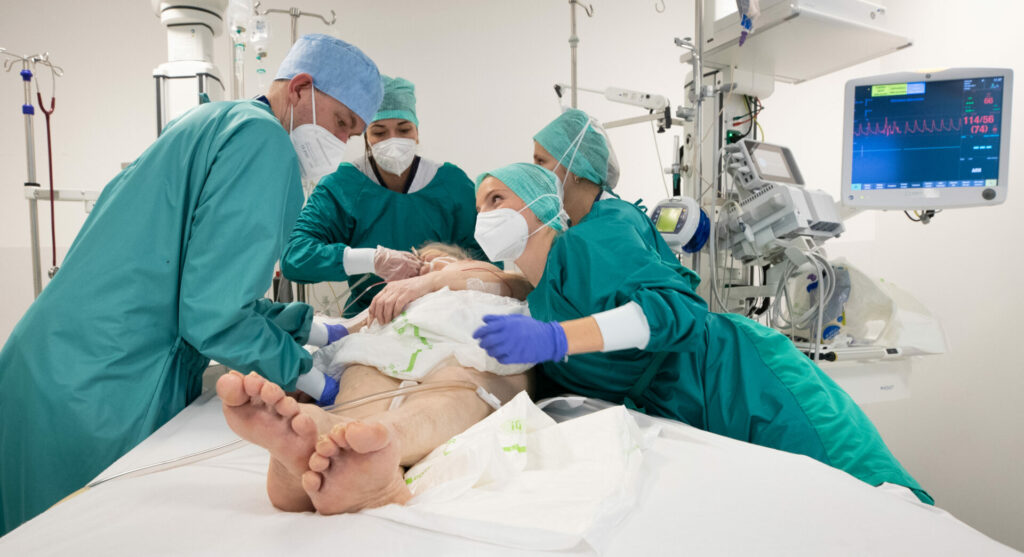The number of Covid-19 patients in Belgium hospitals has risen to 2,331, with 124 of them in the intensive care unit – a strong increase which is the highest since the beginning of May.
In the last seven days, an average of 162.7 patients suffering from Covid-19 were admitted to hospitals each day — up by 9% from the previous seven days.
The figure reflects how many people are hospitalised directly because of the virus, not those admitted with another condition and then also test positive for Covid-19.
On Monday, a total of 2.331 people were in Belgian hospitals due to an infection, about 150 more than Tuesday, while the number of people being treated in intensive care rose to 124 (+35%), the highest this figure has been since mid-May.
While the number of patients in ICU has remained below 200 since 9 March, it has been since the beginning of May that so many have ended up in intensive care.
This number covers all patients who tested positive for Covid-19, including those who were first admitted with a different condition.
Cases, tests and deaths
Between 12 and 18 July, an average of 7,088 new daily Covid-19 infections was identified: an 8% decrease from the previous seven days and about 800 fewer than when figures were last updated on Friday, according to figures published by the Sciensano Institute of Public Health on Friday morning.
However, it must be taken into account that the official number of infections is an underestimation, as not everyone goes in for a PCR test after a positive self-test result.
The average number of tests taken per day is slightly lower than at the end of last week, sitting around 20,500. The positivity rate is currently at 36.9%, meaning over one in three tests has a positive result.
Related News
- EMA lists new side effects of Novavax, Moderna and AstraZeneca vaccines
- Health Minister announces new regulations on Covid-19 masks
Omicron BA.5 remains the dominant strain, accounting for 81.2% of all infections. The strain is said to be no more or less infectious than the other Omicron subvariants but it does succeed very well in circumventing people’s accumulated immunity.
Deaths, as a result of infection, are rising as well: about 11 Covid-19 patients died each day over the past seven days – up by 48% from the previous week.
The total number of deaths in Belgium since the start of the pandemic amounts to 32,089 (+38 since Tuesday). However, this figure includes people who died of another cause but who happened to be infected, meaning that this is an overestimate of deaths attributed to Covid-19.
Reproduction rate, incidence, and total vaccinations
The reproduction rate dropped slightly to 1.05. This figure represents the average number of people that contract the virus from each infected person. When it is above 1, it means that the epidemic is gaining ground in Belgium.
The incidence (the number of new cases per 100,000 inhabitants) also continues to rise and now sits at 894 over the past 14 days.
As of Monday, more than 9.09 million people are fully vaccinated – 89% of Belgium's adult population and 78% of the total population. This figure was higher, but since the end of June, this figure takes into account vaccinated people who died.
Meanwhile, more than 7.17 million people have received a booster dose of the vaccine, representing 76% of over-18s and 62% of the entire population. From September onwards, an additional booster will be available to a larger group of the population. Find out if you are eligible here.

